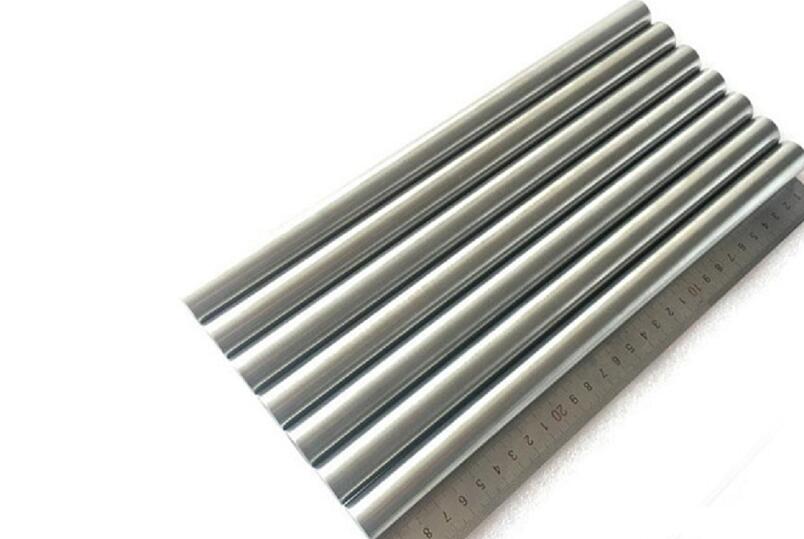Tungsten Nickel Iron Alloy: Applications, Properties, and Preparation Methods

Tungsten-nickel-iron alloy, also known as ferro-tungsten-nickel alloy. It can be simply understood as an alloy with tungsten as the main raw material and nickel, iron, and copper as auxiliary raw materials, and the ratio of adding nickel-iron is generally 7:3 or 1:1. In this article, let's take a look at the applications and properties of tungsten nickel iron alloy.

Applications and Properties of Tungsten Nickel Iron Alloy
Properties of Tungsten Nickel Iron Alloy
Tungsten-nickel-iron alloy has a higher density (16.5-18.75g/cm3), higher strength (tensile strength of 700-1000Mpa), larger thermal conductivity (5 times of die steel), and smaller linear expansion coefficient (only 1/2-1/3 of iron or steel), good electrical conductivity and plasticity, excellent weldability and machining performance.
Applications of Tungsten Nickel Iron Alloy
With its excellent physical and chemical properties, the tungsten-nickel-iron alloy is widely used in information, energy, metallurgy, aviation, aerospace, national defense, military industry, and nuclear industry. The main products include counterweights, counterweights, radiation shields, gyroscope rotors, armor-piercing bullet cores, switch contacts, etc.
Differences Between Tungsten Alloy with a High Nickel-Iron Ratio and Traditional Nickel-Iron Ratio
Under the condition of slow cooling after sintering, the mechanical properties of the former are far lower than the latter. This is mainly because, under this condition, the non-dispersed β phase will be severely precipitated in the former binder phase and the interface between the tungsten and binder phase, thereby reducing the mechanical properties.
Under the condition of solution quenching, the comprehensive mechanical properties of the former are far better than the latter. This is mainly because as the ratio of nickel to iron increases, the strength and toughness of the high nickel-to-iron ratio tungsten alloy will also increase. When the ratio of nickel to iron is about 9/1, the mechanical properties of the alloy reach the maximum value.
Preparation Method of Tungsten Nickel Iron Alloy
Raw materials: ammonium tungstate, nickel nitrate, iron nitrate, concentrated nitric acid, etc.
Preparation Process:
1. Add the mixed solution of dispersant and ammonia to the ammonium tungstate solution under stirring conditions.
2. Add ferric nitrate and nickel nitrate to the above solution, stir it evenly, heat it in a 60℃ water bath for 10 minutes, then add concentrated nitric acid for a chemical co-precipitation reaction.
3. After the completion of the reaction, the precipitate is placed in a drying oven and calcined at 250°C for about 2 hours to obtain composite oxide powder.
4. After crushing the composite powder in a mortar and sieving with a 200-mesh sieve, the sieved powder is placed in a strong drainage venting furnace for low-temperature reduction (650°C-750°C) to obtain the tungsten-nickel-iron composite powder.
5. The composite powder is pressed with a steel mold under a pressure of 360 MPa to obtain a green compact.
6. The green compact is placed in an oxygen furnace at 1150°C-1350°C for 2h to sinter, and then the final product is made.
Conclusion
Thank you for reading our article and we hope it can help you to have a better understanding of the applications and properties of tungsten nickel iron alloy. If you want to learn more about tungsten nickel iron alloys or other types of refractory metals and alloys, we would like to advise you to visit Advanced Refractory Metals (ARM) for more information.
Headquartered in Lake Forest, California, USA, Advanced Refractory Metals (ARM) is a leading manufacturer & supplier of refractory metals & alloys across the world. It provides customers with high-quality refractory metals & alloys such as niobium, molybdenum, tantalum, rhenium, tungsten, titanium, and zirconium at a very competitive price.
{{item.content}}
LEVE A REPLY
{{item.children[0].content}}
{{item.content}}






